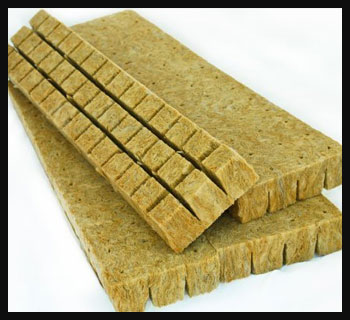In the ever-evolving world of building materials and insulation, two names stand out as the leaders in the industry: Havelock wool and Rockwool. You might have heard these names mentioned during a construction project or in conversations among environmentally conscious builders.
In this comprehensive article, we’ll delve deep into the world of Havelock wool and Rockwool insulation, comparing their benefits, drawbacks, and overall performance.
You will have all the knowledge necessary to choose the finest insulation option after you finish reading this article.
A Brief Comparison Table
| Feature | Havelock Wool | Rockwool |
| Material | 100% natural sheep’s wool | Molten rocks and minerals |
| Environmental Impact | Renewable, biodegradable, low carbon footprint | Energy-intensive production, higher emissions |
| Moisture Resistance | Absorbs and releases moisture | Naturally water-repellent |
| Acoustic Insulation | Excellent sound absorber | Good sound absorber |
| Thermal Insulation | High thermal performance | High thermal performance |
| Fire Resistance | Moderate | Non-combustible, excellent fire resistance |
| Cost | Typically more expensive | More cost-effective |
| Availability | Limited in some regions | Widely available |
| Installation Comfort | Comfortable, no irritation | Can cause itching and irritation |
| Mold and Mildew Resistance | Resistant due to moisture-wicking properties | Resistant due to water-repellent nature |
The Tale of Havelock Wool

Once upon a time, in the picturesque land of New Zealand, Havelock wool was born.
The product of sustainable sheep farming practices, Havelock wool has become a favorite among eco-conscious builders and homeowners alike.
This eco-friendly insulating material, which is made entirely of genuine sheep’s wool, has exceptional thermal and acoustic qualities.
Pros of Havelock Wool
- Natural and Renewable: Havelock wool insulation is sourced from sheep’s wool, making it a renewable and biodegradable material. For individuals who appreciate sustainability and wish to lessen their carbon impact, it is the best option.
- Moisture Resistance: Havelock wool’s natural moisture-wicking properties help maintain a healthy indoor environment. It can absorb and release moisture without losing its insulation capabilities, which helps prevent mold and mildew growth.
- Superior Acoustic Insulation: If you’re looking to create a quiet and peaceful space, Havelock wool is the way to go. It’s a natural sound absorber, significantly reducing noise levels within the home or building.
Cons of Havelock Wool
- Higher Cost: Havelock wool insulation tends to be more expensive than other insulation materials, including Rockwool. Those with limited funds may find the greater price to be a disadvantage.
- Limited Availability: Havelock wool isn’t as readily available as other insulation materials, which may make it difficult to find in some regions.
Enter Rockwool: A Rival to Reckon With

Rockwool, also known as mineral wool, is a versatile insulation material made from molten rocks and minerals, spun into fibers.
Since the beginning of the 20th century, it has been a popular option for insulation and is still competitive with more modern, environmentally friendly options such Havelock wool.
Pros of Rockwool
- Fire Resistance: One of the major selling points of Rockwool is its fire resistance. Since Rockwool is non-combustible and won’t catch fire, it is the perfect material for houses and other structures that require additional fire safety measures.
- Thermal Insulation: Rockwool is an excellent insulator, helping to keep your home warm in the winter and cool in the summer. Its high-density structure makes it an effective barrier against heat transfer, reducing energy costs and increasing comfort.
- Water Resistance: Rockwool is naturally water-repellent, making it a suitable insulation material for areas prone to moisture or dampness. It does not absorb water, which prevents mold and mildew growth.
Cons of Rockwool
- Environmental Concerns: While Rockwool is made from natural materials, its production process is energy-intensive and contributes to greenhouse gas emissions. This makes it less environmentally friendly compared to Havelock wool.
- Potential Irritation: Installing Rockwool insulation can be uncomfortable, as the fibers can cause itching and irritation to the skin, eyes, and respiratory system. Protective gear is a must when working with Rockwool.
Frequently Asked Questions (FAQ)
It depends on your priorities. Havelock wool insulation is an eco-friendly, natural, and renewable choice with excellent thermal and acoustic properties. If you value sustainability and moisture resistance, it might be the better option for you. However, if you prioritize fire resistance and cost-effectiveness, Rockwool may be a more suitable choice.
No, Havelock wool is not mineral wool. Havelock wool is made from 100% natural sheep’s wool, while mineral wool, like Rockwool, is made from molten rocks and minerals.
For those who value eco-friendliness, moisture resistance, and superior acoustic insulation, Havelock wool is worth considering. In contrast to Rockwool, it is more expensive, and supply may be restricted in certain areas. It’s essential to weigh your priorities and budget before making a decision.
Havelock wool is largely used in the construction of homes and businesses as insulation. It may be used for many different things, including flooring, walls, ceilings, and even miniature houses or RVs. It is appropriate for usage in humid or wet environments because to its inherent moisture-wicking qualities.
The ideal kind of insulating wool relies on your unique demands and preferences, thus there is no universally applicable solution to this question. A biodegradable, moisture-resistant, and sound-absorbing insulation material, Havelock wool is a great option. However, Rockwool is a superior choice for people who value cost efficiency, water resistance, and fire resistance.
The Verdict
When it comes to choosing between Havelock wool and Rockwool, there’s no clear winner. Both insulation materials have their unique advantages and drawbacks.
Havelock wool is the more environmentally friendly option, offering moisture resistance and superior acoustic insulation. In contrast, Rockwool boasts fire resistance, water resistance, and cost-effectiveness.
The ideal insulating material for your project will ultimately rely on your personal requirements, top priorities, and financial constraints. Understanding each material’s advantages and downsides and uses can help you make a smart choice that suits your requirements.
Whether you decide on Havelock wool or Rockwool, it’s essential to prioritize proper installation to ensure optimal performance. Always consult with an insulation professional or follow manufacturer guidelines to achieve the best results and create a comfortable, energy-efficient living or working space.



